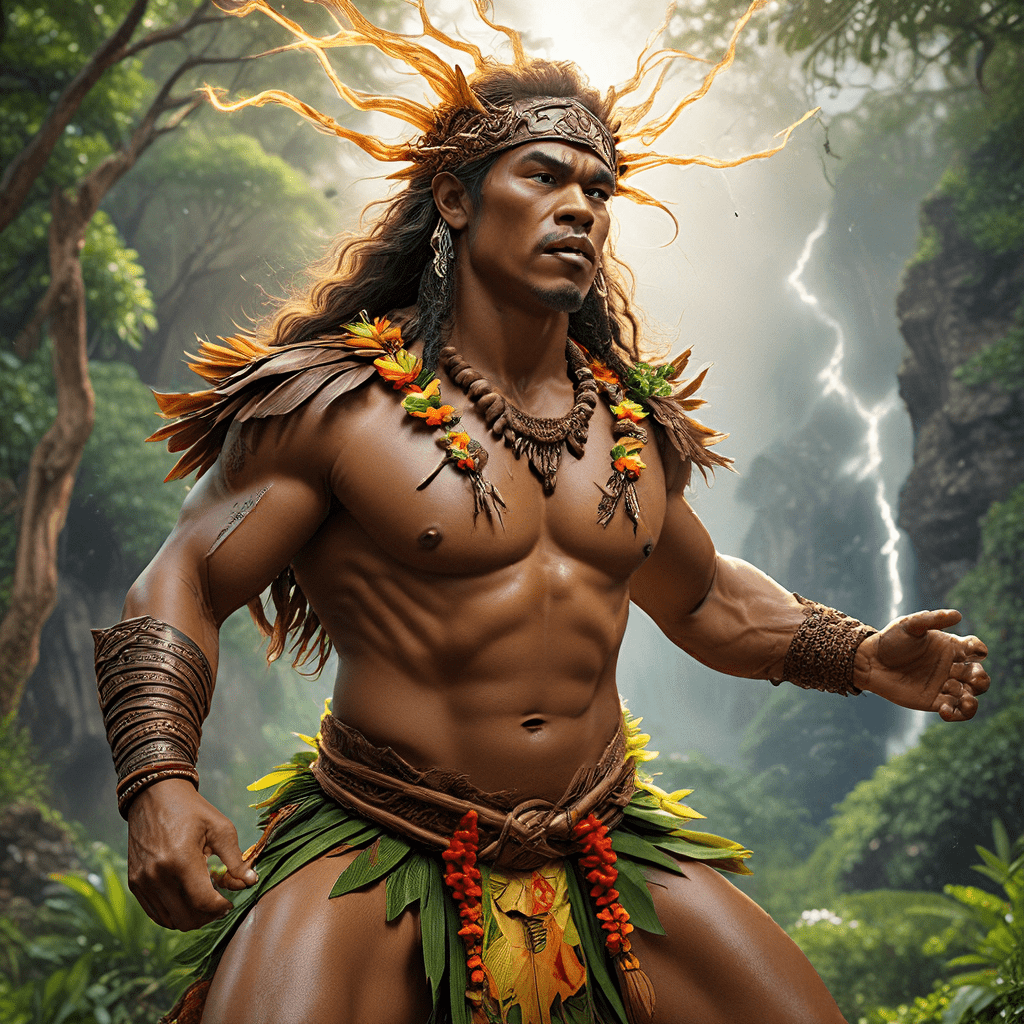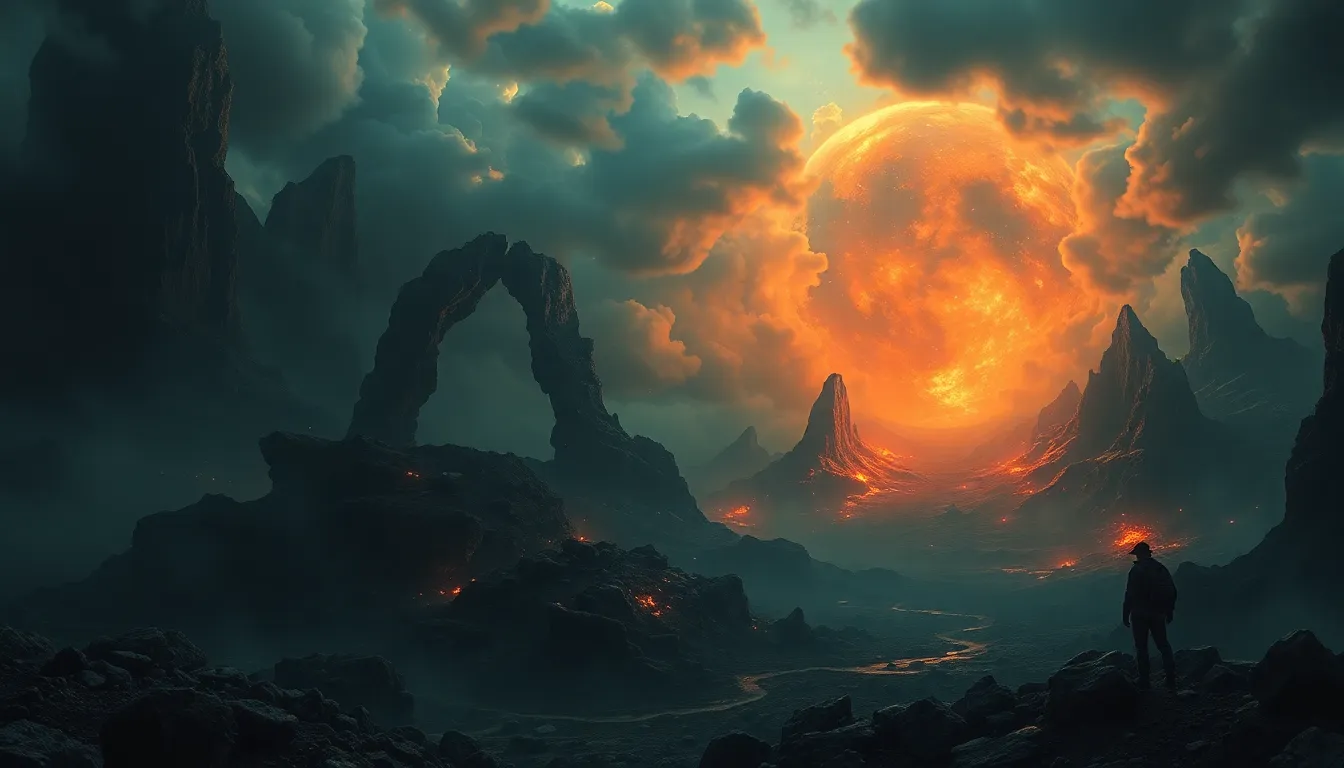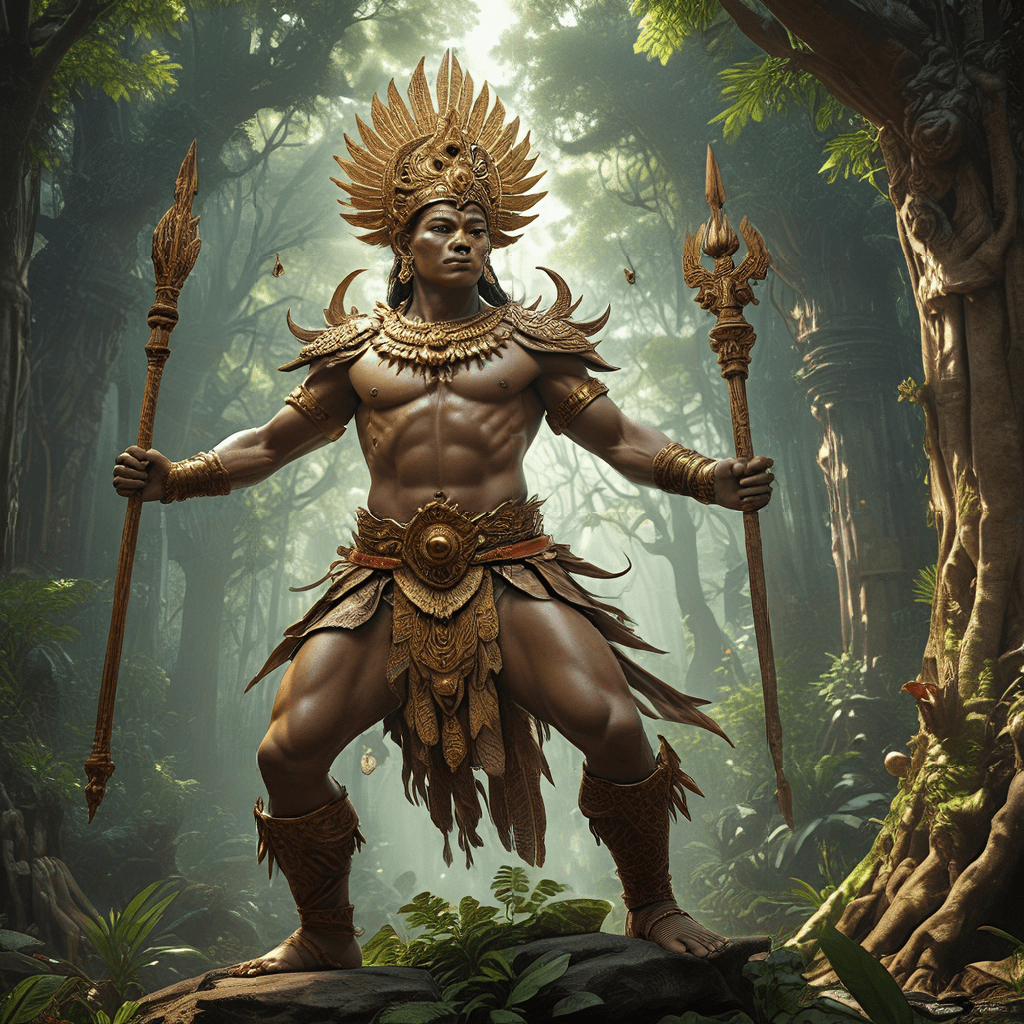The Thunder God in Hawaiian Mythology: A Powerful Force of Nature
In the rich tapestry of Hawaiian folklore, the thunder god Kū holds a prominent position as a powerful force of nature. He is revered as a deity of immense strength, embodying the awe-inspiring power of the storms and the tumultuous energy of the natural world. The stories surrounding Kū paint a vivid picture of a deity whose presence is felt in the thunderous roars that shake the heavens, the torrential rains that nourish the land, and the fierce winds that whip across the islands. Kū's influence extends far beyond the realm of weather, as he is also associated with war, agriculture, and the creation of the Hawaiian islands.
Kū: The Thunder God
Kū, whose name translates to "to stand" or "to be firm," is the thunder god in Hawaiian mythology. He is often depicted as a warrior, a strong and imposing figure who embodies the power and might of the storms. His attributes include the lightning bolt, the heavy rain, and the fierce winds. In some accounts, Kū is described as a fierce and formidable warrior, his presence commanding respect and fear alike. Others portray him as a more benevolent figure, responsible for providing rain for the crops and protecting the islands from harm.
The Domains of Kū: War, Agriculture, and the Storms
Kū's influence extends far beyond the realm of weather. He is also associated with war, agriculture, and the creation of the Hawaiian islands. As the god of war, Kū represents the strength, courage, and determination needed for battle. In this role, he is often invoked by warriors seeking victory and protection. As the god of agriculture, Kū is responsible for providing the rain and fertile soil needed for successful harvests. Farmers would pray to Kū for bountiful crops and protection from pests and diseases. Kū's association with the creation of the Hawaiian islands stems from his role in the creation myth, where he is credited with shaping the islands out of the primordial chaos.
The Origins of Thunder: Explanations from Hawaiian Folklore
Hawaiian folklore provides several explanations for the origins of thunder. One popular story describes thunder as the sound of Kū's footsteps as he walks across the heavens. Another account suggests that thunder is the result of Kū's throwing his magical spear, which causes the sky to rumble. Yet another story tells of Kū's battle with his brother, the god of fire, Pele. Their fierce fighting caused the sky to shake and the ground to tremble, resulting in the thunder that we hear today.
Kū and the Creation Myth: The Role of the Thunder God in Shaping the Islands
In Hawaiian creation myths, Kū plays a significant role in shaping the islands. According to one popular account, the earth was initially a vast expanse of water. Kū, the god of creation, emerged from the depths and began to stir the waters, causing the land to rise from the ocean floor. He used his powerful hands to lift and shape the islands, giving them their unique form and features. Kū's role in the creation myth highlights his connection to the land and his power over the natural world.
Kū’s Relationships with Other Hawaiian Deities: A Complex Web of Power
Kū's position within the Hawaiian pantheon is complex, characterized by both alliances and rivalries. He is often depicted as a powerful and independent deity, but his actions are intertwined with those of other gods. His relationship with the fire goddess Pele is particularly noteworthy. Their conflict, often described as a battle for dominance over the islands, is a recurring theme in Hawaiian folklore. This rivalry is not only about power but also about the opposing forces of nature they represent – thunder and rain versus fire and lava. While Kū is associated with abundance and fertility, Pele embodies the destructive and transformative power of volcanic eruptions. Their interactions highlight the dynamic balance of creation and destruction within the natural world.
Kū's connection to the god of peace, Lono, is another important facet of his character. Together, they represent the duality of war and peace, the necessary balance that ensures the continuation of life. While Kū's strength and aggression are vital for protection and defense, Lono's peaceful energy is needed for prosperity and harmony. Their roles reflect the belief that both war and peace are essential components of a thriving community.
Kū’s Influence on Hawaiian Culture: From Warfare to Agriculture
Kū's influence on Hawaiian culture is profound, extending to various aspects of life, from warfare and agriculture to social structures and beliefs. His association with war made him a revered figure among warriors, who sought his blessings before battle. The traditional Hawaiian war god, Kūkaʻilimoku, was believed to be an embodiment of Kū's power and ferocity. His influence is also evident in the practice of ʻōlelo noʻeau (proverbs), where expressions like "Kū i ka ʻāina" (to stand firm in the land) reflect Kū's strength and resilience.
Kū's influence on agriculture is equally significant. His role as the rain god ensured that farmers had access to the necessary resources for a bountiful harvest. The act of planting crops was often accompanied by prayers to Kū, seeking his favor and protection. The importance of agriculture in Hawaiian society can be seen in the many festivals and rituals dedicated to Kū, who was considered the patron deity of farmers. His image was often incorporated into agricultural practices, such as the use of Kū stones, which were believed to possess the power to enhance crop yields.
The Modern Relevance of Kū: A Symbol of Power and Nature
Despite the passage of time, Kū remains a powerful symbol in modern Hawaiian culture. He represents the strength and resilience of the Hawaiian people, their connection to the natural world, and the enduring power of their traditions. His image is often found in art, music, and literature, serving as a reminder of the importance of honoring the ancestors, respecting the land, and embracing the power of nature.
The modern relevance of Kū can also be seen in the growing interest in Hawaiian spirituality and mythology. As people seek a deeper connection to their heritage and the natural world, the stories of Kū offer valuable insights into the beliefs and values of their ancestors. His story serves as a reminder of the enduring power of nature and the importance of maintaining a harmonious relationship with the environment.
Theories on the Origins of the Thunder God: Ancient Polynesian Beliefs
The origins of Kū, like many deities in Polynesian mythology, can be traced back to ancient beliefs about the power of nature. The association of Kū with thunder, lightning, and rain reflects the awe and respect that early Polynesians held for these powerful forces. The thunder god in Polynesian cultures represents the forces of nature that are both beneficial and destructive. He is both a provider of rain for crops and a bringer of storms that can devastate communities.
The concept of a thunder god is widespread in Polynesian cultures, with variations in name and attributes. For example, in Maori mythology, the thunder god is known as Tāwhirimātea. The similarities between these deities suggest a common origin and a shared understanding of the power of nature.
Evolution of the Kū Legend: Variations in Different Hawaiian Islands
The stories of Kū vary across the different Hawaiian islands, reflecting the unique cultural and geographical contexts of each island. While the core aspects of his character remain consistent, the specific details and narratives surrounding him differ. Some islands emphasize Kū's role as a warrior god, while others focus on his agricultural or creative aspects.
This variation is a testament to the dynamic nature of oral traditions and the way mythology evolves over time. The different versions of Kū's story illustrate the diversity and adaptability of Hawaiian culture, as communities adapted their beliefs and narratives to their specific environments and experiences.
FAQ
Q: What are some of the specific things that Kū is revered for?
A: Kū is revered for his power over storms, his role in the creation of the Hawaiian islands, his association with agriculture and war, and his role in shaping Hawaiian culture.
Q: How is Kū's story relevant today?
A: Kū's story is still relevant today as a powerful reminder of the importance of respecting nature, honoring our ancestors, and embracing the strength and resilience of the Hawaiian people.
Q: What are some of the challenges of researching and understanding the Kū legend?
A: One of the challenges is that Kū's story is primarily passed down through oral tradition, which means there are variations in different versions. Another challenge is that some aspects of the legend are deeply rooted in Hawaiian spirituality and can be difficult to understand without a thorough understanding of Hawaiian culture.
Q: What is the significance of Kū's relationship with other gods?
A: Kū's relationships with other gods, particularly Pele and Lono, reflect the complex balance of forces in the natural world. Kū's rivalry with Pele highlights the tension between creation and destruction, while his partnership with Lono represents the balance of war and peace.
Q: How does the Kū legend contribute to our understanding of Hawaiian mythology?
A: The Kū legend offers valuable insights into Hawaiian mythology, providing a window into the beliefs and values of the ancient Hawaiian people. It highlights their reverence for nature, their understanding of the interconnectedness of all things, and their complex relationship with the forces of nature.



